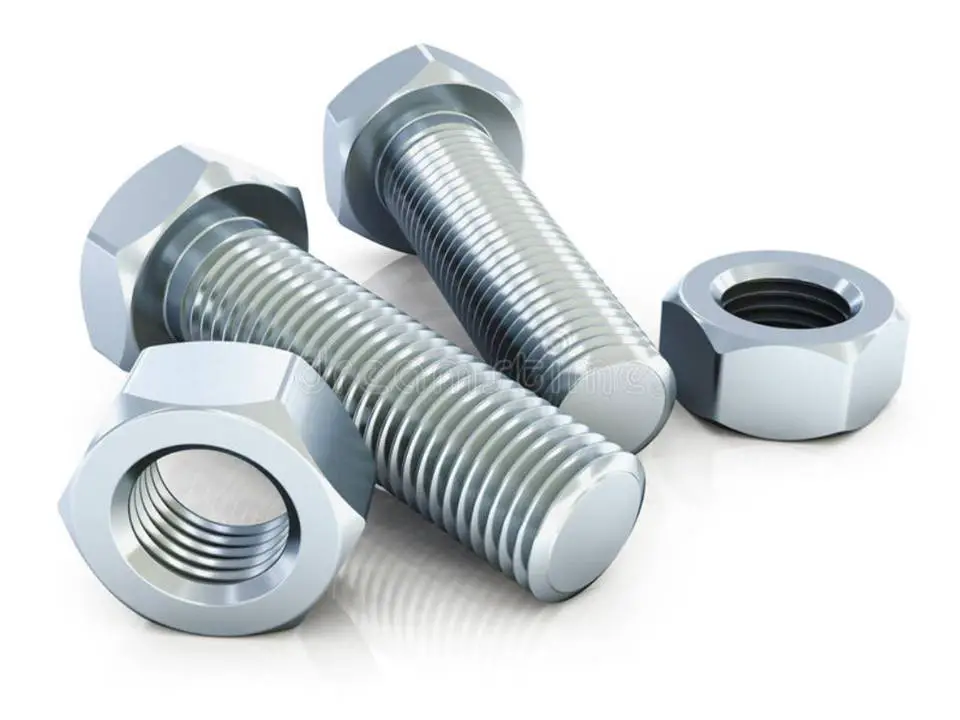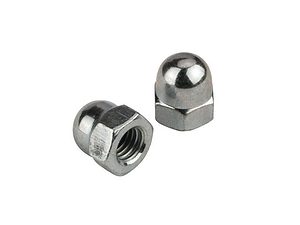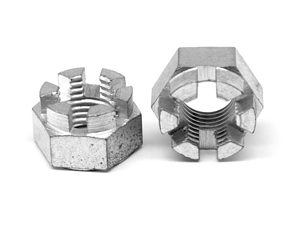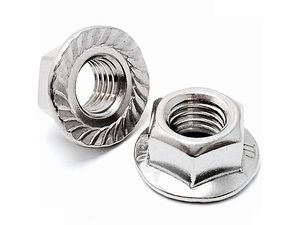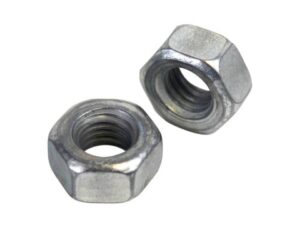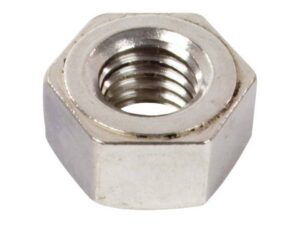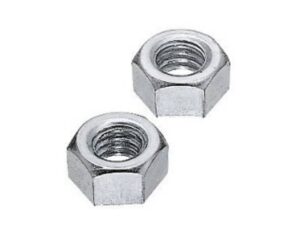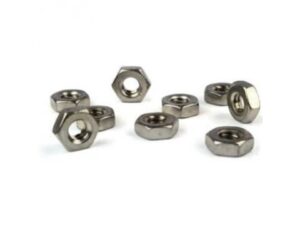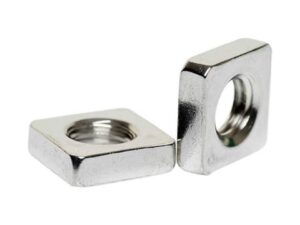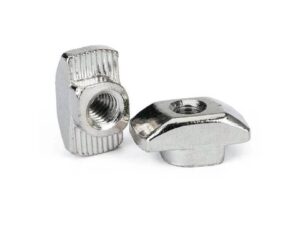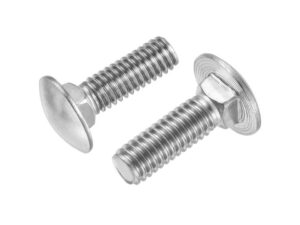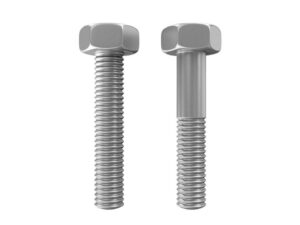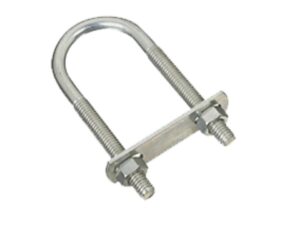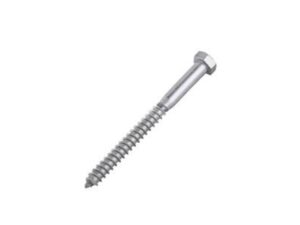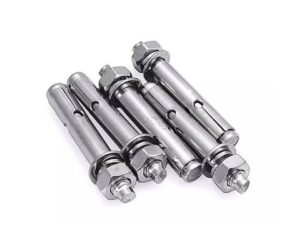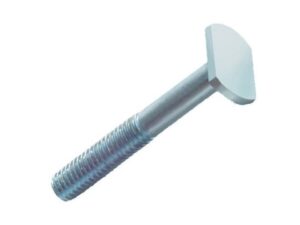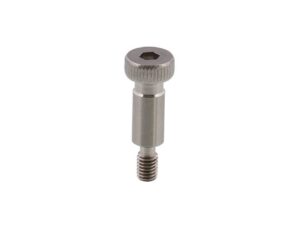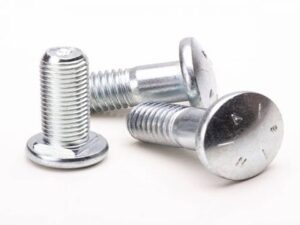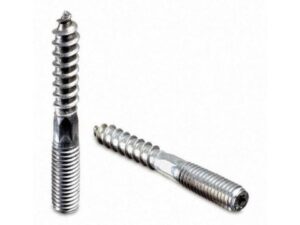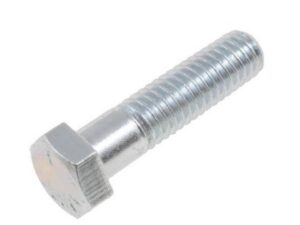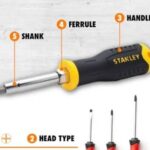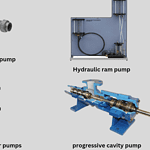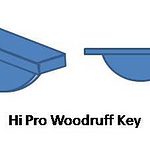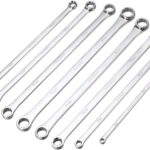Nuts and bolts are fasteners like rivets that are used to join together two or more pieces of material. They cannot be used without each other, and must be used together in order to function correctly. They are available in a variety of sizes and types, and are chosen based on the application.
There are many different types of nuts and bolts, each with their own specific purpose. The most common types of nuts are hex nuts, flange nuts, and locking nuts and the most common types of bolts are hex bolts, carriage bolts, and machine bolts. According to their applications, they are used at different locations. In this article we will discuss about what is nuts and bolts with their types and latter we will differentiate them.
Hope you enjoy reading it !!
What Are Nuts and Its Types?
A fastener having a threaded hole is called a nut. A nut is a little piece of metal with a ribbed hole in the middle. These curving holes are referred to as threads.
A nut is a particular kind of fastener that is always used with bolts. It is significant to remember that while nuts might serve as a fastening mechanism, they cannot replace bolts. We must first comprehend the shape of walnuts in order to comprehend this.
Although the outside of its body can have any shape, it is often hexagonal or round. The outward threading of the bolt and the interior threading of the nut are the same.
Also Read:
Types of Nuts:
There are many different types of nuts, each with its own specific purpose.
The most common types of nuts are:
1. Cap Nuts:
The shape of the cap nut, also known as the acorn nut, inspired its name. To avoid contact with the external thread, the nut has a domed top.
2. Castellated Nuts:
A castellated nut, also known as a castle or slotted nut, is a nut with slots cut into the top that is used with cotter pins to prevent loosening. Used in low-torque applications, such as securing a wheel bearing.
3. Nut Pairings:
A coupling nut is a threaded fastener that connects two male threads, typically a threaded rod. Because the fastener has a hex on the outside, it can be driven with a wrench.
4. Flange nuts:
Flange nuts have a washer-like flange on one side. The flange helps to distribute the load and prevents the nut from pulling through the surface. Flange nuts are used in a variety of applications, and are available in a variety of sizes.
5. Locking nuts:
Locking nuts have a mechanism that locks the nut in place. The most common type of locking nut is the nylon insert lock nut. Nylon insert lock nuts have a nylon collar that locks the nut in place. Locking nuts are used in applications where it is important to prevent the nut from loosening.
6. Hex Nuts, Heavy duty:
Greater in size, weight, and thickness than a standard hex nut. Heavy hex nuts have a hex shape, are internally threaded, and are driven with a wrench.
Often used in conjunction with hex cap screws and carriage bolts.
7. Machine Hex Nuts:
A machine nut has internal threads and is hex-shaped. They are used with machine screws that are less than 1/4′′ in diameter and are smaller than a hex jam or hex finish nut.
8. Small Hex Machine Nuts Pattern:
A machine nut has internal threads and is hex-shaped. They are used with machine screws that are less than 1/4′′ in diameter and are smaller than a hex jam or hex finish nut.
9. Square Nuts:
A nut with four sides and a flat or beveled top. Square nuts have a larger surface contact area, which increases resistance to loosening. Mated with square head bolts in most cases.
10. T-Nuts:
T-nuts and tee nuts are used to fasten wood, particle board, or composite board while leaving a flush surface. In profile, a long thin body with a flange at one end resembles a T. T-nuts frequently have three or four prongs that sink into the surface to improve retention.
What Are Bolts and its Types?
A bolt is a type of fastener that is used to hold two or more pieces together. A bolt has a threaded shaft on one end and a head on the other that are used to screw it into place and tighten it.
Typically, the bolt’s head has a hexagonal or circular form. The bolt is screwed into place using the threaded shaft that extends from the head. The threads of the nut and the shaft of the bolt line up perfectly.
Also Read:
Types Of bolts:
There are many different types of bolts, each with its own specific purpose. The most common types of bolts are:
1. Carry Bolts:
Carriage Bolts are a type of self-locking bolt that provides security by employing a flush-mount domed head that allows access to remove or loosen these bolts only from the nut side of the bolt.
Under the carriage bolt’s domed head is a square section that can be inserted into a corresponding square cut that is slotted in the material being joined to provide the self-locking feature that allows the bolt to be tightened from the nut side without the need for a wrench.
2. Hex Bolts:
Hex bolts, also recognized as hexagon head bolts or hexagonal head bolts, are a widely used type of bolt that are available in both inch and metric sizes. As the term indicates, these bolts have a hexagonal or hex head that can be threaded with a wrench or socket.
A hex bolt can be completely threaded or have an un-threaded shoulder. Hex bolts are widely used to join metal to metal or metal to metal as well as wood to wood. Hex nuts and washers are commonly used with hex bolts, with washers being especially useful in situations where the material being joined is softer and may deform when the hex bolt is tightened.
3. U-Bolts:
U-bolts are a type of fastener that gets their name from their shape. As the name implies, u-bolts are shaped like the letter “U” and are most commonly used to secure pipes or other cylindrical objects to a flat surface.
U-bolts can be made from a variety of materials, including steel, stainless steel, brass, and bronze. The application will determine the material selected. For example, u-bolts that will be used in a marine environment may be made from stainless steel to resist corrosion from salt water.
4. Lag Bolts:
These are also known as lag screws, are large wood screws with a hexagonal head. Lag They are used to secure lumber and other heavy objects to a surface. The large size and the hex head of lag bolts make them easy to tighten with a wrench or socket, making them ideal for applications where a high amount of force is required.
Lag bolts are available in a variety of sizes and lengths, and can be made from a variety of materials, including steel, stainless steel, brass, and bronze. The usage will choose the material selected.
5. Pipe Bolts:
Pipe bolts are a type of fastener that is used to secure pipes or other cylindrical objects to a surface. They are available in a variety of sizes and lengths, and can be made from a variety of materials, including steel, stainless steel, and brass.
6. T-Head Bolts:
T-head bolts, often referred to as T-slot bolts, have a head configuration that enables them to be inserted into slots or recessed areas, locking the bolt in place and preventing it from spinning when the fastening nut is tightened.
They are utilized in situations when access to both sides of the fastener is not always possible, such as when securing fuel tanks. T-slot T-head bolts can be used to fasten an object at any position along the length of a channel by feeding them into the channel in a device known as a T-slot track.
7. Shoulder Bolts:
Shoulder bolts, also known as stripper bolts, feature a threaded bolt segment with a diameter that is smaller than the shoulder of the bolt (the section of the bolt between the head and the beginning of the threaded portion).
These come particularly handy when you need a rotating component, such a bearing or a bushing, to operate as a shaft or axle.
8. Bolts with a round head:
Round head bolts, which resemble carriage bolts in appearance but lack the square taper beneath the domed head of the bolt, are commonly used to join wood.
Because wood is softer, the bolt can compress against the surface and grip by friction, preventing the bolt from turning when the nut is tightened.
9. Bolts with two ends:
Double-end bolts sometimes referred to as stud bolts, having threaded sections rather than typical heads on each end of the bolt. While one end protrudes is threaded to hold a nut, the other end is threaded to fit into a suitable hole that has been tapped with a matched thread.
10. Machine Bolts:
A flat-pointed screw or bolt is known as a machine screw. They are available in a variety of drive types and heads to suit a wide range of applications.
Frequently driven into tapped holes. These are Used in conjunction with nuts and washers, also known as “stove bolts” or “Stover’s.”
Finishes For Common Bolts and Nuts:
Bolts and nuts can be made of a variety of materials, including steel, titanium, and plastic. A metal bolt or nut’s finish or plating influences its appearance and durability. The following are some common finishes and advantages:
- Zinc– The most common, least expensive metal that resists corrosion and rust.
- Nickel– has a very hard finish, is more expensive, and has good corrosion resistance.
- Chromium– has a bright finish and is resistant to rust and corrosion.
- Chromate– Enhances color, shine, and rust resistance.
- Aluminum– anodizing, hard oxide surface, excellent corrosion resistance Understanding the various types of nuts and bolts, as well as their differences in design and application, can assist you in selecting the best types for your project.
Difference between Nuts And Bolts:
|
Sr.No. |
NUTS |
BOLTS |
| 1 | A nut is a particular kind of fastener that is always used with bolts. | A nut is used in conjunction with a bolt, a solid cylindrical fastening. |
| 2 | The nuts have a circular cross-section and are hollow round cylinders. | The bolts are solid cylinders with a round shape. |
| 3 | They function as a fastener when used with bolts. | Nuts are used to secure the items in conjugation. |
| 4 | Typically, zinc-coated carbon steel is utilized in the manufacturing process. | The substance is frequently used to create premium steel that contains significant amounts of nickel and chromium. |
| 5 | They are not ahead. | They are instructed to tighten and loosen their grip. |
| 6 | Compressive stresses commonly cause the nuts to fail when they are subjected to compressive forces. | Tensile stresses cause them to fail after being subjected to tensile forces. |
| 7 | A little metal item with a hole for threading. | Just ahead is a cylindrical stem with threads. |
| 8 | Among the varieties are T-nut, Cape Nut, Castle Nut, and Wingnut. | Options include Toggle Bolt, U-Bolt, J-Bolt, and Lag Bolt. |
| 9 | Compressive forces are applied to the force. | The force involved is subjected to tensile forces. |
| 10 | Internal threads are found in nuts. | External threads are present on the bolt. |
| 11 | Compared to bolts, they are much smaller. | They are larger in size in term of length. |
| 12 | To keep them from going loose, they contain a locking mechanism. | They do not have a locking mechanism. |
Conclusion:
Nuts and bolts are both essential fasteners. Nuts are used to secure bolts or screws, while bolts are used to join together materials.
The main difference between nuts and bolts is that nuts are female fasteners with internal threads, while bolts are male fasteners with external threads. While both nuts and bolts are made of different materials, the most common material for both is steel.
When selecting nuts and bolts, it is important to consider the application and the materials that will be joined together. For example, if you are working with wood, you would not use the same type of bolt as you would for concrete.
It is also important to make sure that the threads of the bolt match the threads of the nut. Otherwise, the fastener will not work properly. No matter what type of project you are working on, there is a nut or bolt that can help you get the job done!!
Hopefully, this article has helped you to better understand the difference between nuts and bolts. Now that you know the basics, you can start shopping for the right fastener for your next project.
Thank you.

